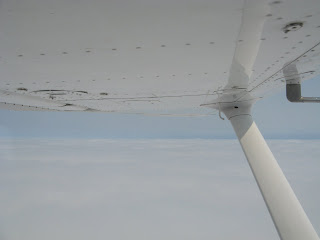These are the show notes to an audio episode. You can listen to the show audio by clicking here: http://traffic.libsyn.com/airspeed/AirspeedGliderRating2.mp3. Better yet, subscribe to Airspeed through iTunes or your other favorite podcatcher. It’s all free!
This is the second part of a two-part series covering my glider rating. To bring you up to speed, in March of this year, I began training in the TG-7A motorglider to add a glider rating. In May, I soloed the aircraft for the first time. Part 1 covered events up through the solo. On to Part 2.
After the solo, things move more quickly. You’ve proven that you can operate the aircraft without the instructor aboard. Or at least that you’re so lucky that you don’t need the instructor. Same result.
Now it’s all about the checkride. It’s not as though you haven’t been preparing for the checkride since your very first flight. But now is when you think about it a lot more.
I bought Bob Wander’s commercial checkride guide. I borrowed some of John’s Harte’s materials. I looked (briefly) for commercial glider knowledge test prep software or online courses, but that was futile. I can perhaps forgive Gleim and the other test prep companies for not having a course tailored for commercial glider guys. We can’t be much of a market. So I paid for Gleim’s regular airplane commercial pilot ground school. It’s geared toward airplane pilots, but the regulatory review was bound to be helpful and I’ll probably go after the commercial for ASEL and AMEL soon anyway.
John and I started hitting the training once a week or so, usually first thing in the morning at the crack of dawn. Sunrise was coming earlier and earlier and we made it a point to turn the prop as soon after sunrise as possible on each of those flights. Mostly, we explored other parts of the glider PTS. We did stalls and slow flight and went looking for crosswinds to work on that technique. [Read more...]



